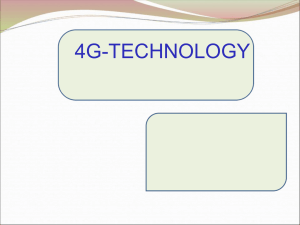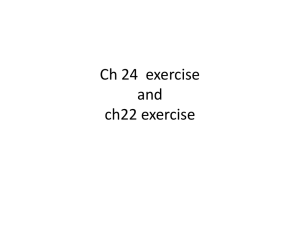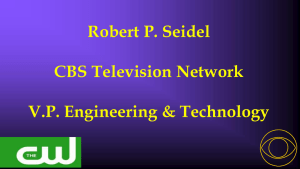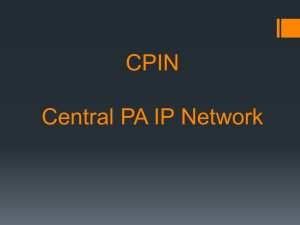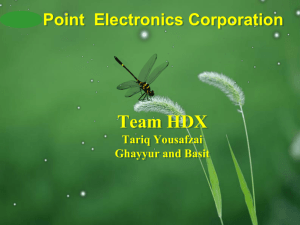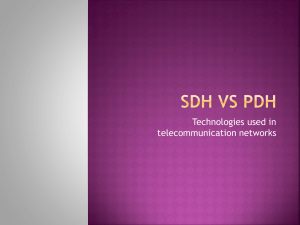ppt
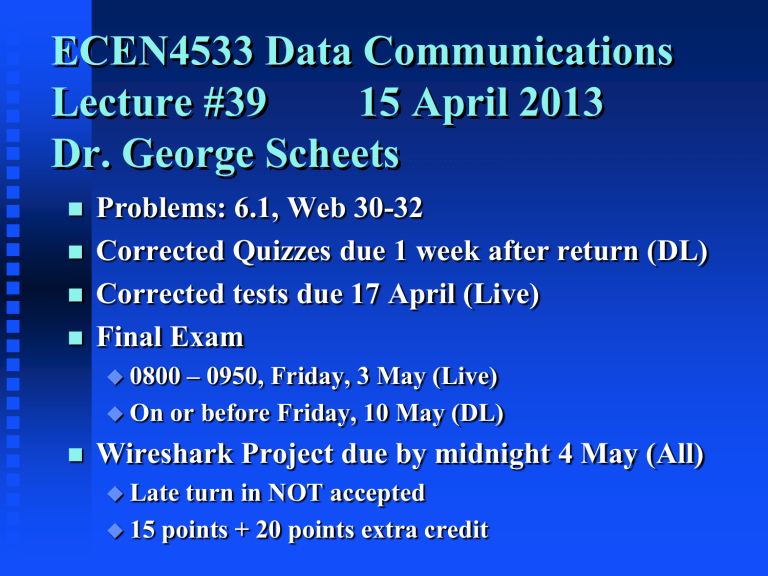
ECEN4533 Data Communications
Lecture #39 15 April 2013
Dr. George Scheets
Problems: 6.1, Web 30-32
Corrected Quizzes due 1 week after return (DL)
Corrected tests due 17 April (Live)
Final Exam
0800 – 0950, Friday, 3 May (Live)
On or before Friday, 10 May (DL)
Wireshark Project due by midnight 4 May (All)
Late turn in NOT accepted
15 points + 20 points extra credit
ECEN4533 Data Communications
Lecture #40 17 April 2013
Dr. George Scheets
Read 17.1 – 17.3
Problems: 2010 Final Exam
Corrected tests due 17 April (Live)
Final Exam
0800 – 0950, Friday, 3 May (Live)
On or before Friday, 10 May (DL)
Wireshark Project due by midnight 4 May (All)
Late turn in NOT accepted
15 points + 20 points extra credit
ECEN4533 Data Communications
Lecture #41 19 April 2013
Dr. George Scheets
Read 17.4 – 17.6
Problems: 2011 Final Exam
Final Exam
0800 – 0950, Friday, 3 May (Live)
On or before Friday, 10 May (DL)
Wireshark Project due by midnight 4 May (All)
Late turn in NOT accepted
15 points + 20 points extra credit
Red, Green, & Blue used on Monitors
Color Video
Camera
R
Monitor
R
G
G
3 Pick-Up
Elements
CCD’s
B
B
Receiver electronics generate 3 signals with strength proportional to light falling on the 3 camera pick-up elements.
3 drive signals
Paints are Subtractive
24 bit color 2 24 = 16.78 M colors
256 Colors
16 Colors
Video Delivery: Over the Air
300 m
ATSC
Digital FDM
Since June 2009
(FCC edict)
40-50 miles
Video Delivery Systems
Cable TV
Tree configuration
Distribution systems originally all coax
Originally Analog NTSC
BW ≈ 700 MHz
AMP
Headend AMP
AMP
Initially Simplex Copper Coax
Filtering
Scan Line (Time Domain)
2
2
0
1
0
0 20 40 60 i
80 100 120 140
127
Monitor Image
Filtering
Scan Line (Frequency Domain)
4
4
X j
2
0
0
0 10 20 30 j
40 50
1/2 the points thrown out (values < .1)
Scan Line (Frequency Domain after zeroing)
4
4
60
Y j
2
0
0
0
0 10 20 30 j
40 50 60
70
64
70
64
Filtering
Reconstructed Scan Lines (Time Domain after filtering) y i
2
2
1
0
0.086
1
0
0 20 40 60 80 100 120 i
140
127
Using NxN pixel blocks localizes distortion to NxN area, unlike this example.
y
Monitor Image
Dick Tracy with Wrist Radio
This is a small JPEG image that's been enlarged.
With a good contrast monitor, you should be able to see evidence of the blocks, and should also note that the distortion tends to be localized to areas where the picture is changing.
JPEG Distortion
Note the fuzzy gray 'cloud'.
Morse Code:
An Unequal
Length Code
Average bit rate is
< fixed length code
(6 bits/character for the alphabet if using fixed length code)
Image Source:
Wikipedia
Huffman Coder
Unequal Length Code Words
High Probability? Assign Small Word.
Suppose have 4 voltages to move:
-3 v 25%
-1 v 5%
+1 v 40%
+3 v 30%
2 bit code word
11
10
00
01
Huffman Code
111
110
0
10
1,000,000 voltages/sec → 2,000,000 bps (2 bit code)
1,000,000 voltages/sec → 1,900,000 bps (Huffman)
.25(3) +.05(3) + .40(1) + .30(2) = 1.9 bits/voltage on average
Uniquely Decodable: 1110010110 = ?
David A. Huffman
1953 PhD Thesis @ M.I.T.
MPEG Video Frame Sequence
1/30th second
Predicted Pictures
Mostly change since previous
I or P frame
Bi-directional Pictures
Mostly use
Motion Estimation
Techniques
Intrapictures
(JPEG Still)
Harry Nyquist
Ph.D. Yale 1917
Bell Labs 1917 - 1954
ISI due to Brick-Wall Filtering
4.5
z k z2 k
0 smearing
4.5
0
0
Equalizer can undo some of this.
20 40 60 k
80 100 120 140
127
Representative Video Bit Rates
(Hi ↓ Lo Quality)
1.2 Gbps Uncompressed HDTV
19.4 Mbps ATSC ( ≈ HDTV quality)
8 - 9 Mbps MPEG4 ( ≈ HDTV quality)
90 Mbps Uncompressed NTSC (SDTV)
3 - 6 Mbps MPEG2 ( ≈ SDTV quality)
1.5 Mbps MPEG4 ( ≈ SDTV quality)
1.5 Mbps MPEG1 ( ≈ VHS < SDTV quality)
Note: ATSC, MPEG2, & MPEG4 support a wide variety of formats (SDTV ↔ HDTV)
Representative Video Bit Rates
(Hi ↓ Lo Quality)
1.2 Gbps Uncompressed HDTV
19.4 Mbps ATSC ( ≈ HDTV quality)
8 -
9 Mbps MPEG4 ( ≈ HDTV quality)
90 Mbps Uncompressed NTSC (SDTV)
3 - 6 Mbps MPEG2 ( ≈ SDTV quality)
1.5 Mbps MPEG4 ( ≈ SDTV quality)
1.5 Mbps MPEG1 ( ≈ VHS < SDTV quality)
How Much More Compression is Still Possible?
H.264 uses 30% less bits than MPEG4
November 2008 IEEE Communications Magazine
